Description
NANDAY CONURE FOR SALE
Nanday Conure for Sale,the head is black, along with the cheeks and throat, which looks like a cap. The rest of the body is green, the throat and breast are blue, and the feet are red.
Nanday loves to come out of the cage. He comes to the front of the cage every time someone comes near. Nanday Conure likes to tumble and toss everything in his cage. He knocks his perches down, empties his water as soon as you put it in, and tips over everything that is not securely attached…all for FUN! He has proven to be a very good escape artist, too. His cage doors must be securely fastened with wire.
Besides being very social and quite active, Nanday conures are easily tamed. These little parrots love to learn tricks. Most conures can learn a few words though their voices are high pitched. Consequently what they are saying is often unclear. They are hardy birds that rarely get sick.
Handling/Training of a Nanday Conure
Always handle your pet Nanday conure gently. If a person is afraid of a bird, the bird can sense this and it can make it impossible to develop a relationship. Never hit your bird or you will loose it’s trust, probably forever.
Taming Basics
To train you pet, the first thing you should do is have it’s wings clipped. A bathroom is a good area for working with your conure to train it. Be sure to cover the mirrors, have the windows closed and covered and the door closed.
Always reward good behavior and each success with loving praise and a treat. Some treats are a cracker, fruit such as a piece of grape, or a nut. Repeat the hand-taming lessons several times a day but for short periods of time, about 20 minutes a session.
Initial Training
Place the Nanday conure on a perch. If it insists on flying off, pick it up and replace it on the perch until it becomes use to the perch and is comfortable with it.
The next step is to take a second perch and gently push into your pet’s chest to encourage it to step up on it. Sometimes offering a treat to coax it up on the perch as it reaches for the treat will help.
Once it steps up without hesitation, you can then substitute your finger for the perch. If your conure tries to bite, you can blow on it and it will soon learn to behave.
Advanced Training
These are very bright birds and love learning tricks. Some of the tricks you can teach it to do are to play dead, lay on its back, and even pick up objects and bring them to you. Your conure can also learn to talk with patience and persistence.
Activities of Nanday Conures
Nanday Conure (for Sale) needs a great deal of exercise, and all conures are chewers. They must have distractions to keep them from becoming bored and lonely. Gnawing and climbing are great activities for this. They will generally chew up anything wooden! Natural perches and fresh twigs from willow, elder, poplar, and hawthorn work well
Other great toys include bells, ropes, swings, untreated leather, chew toys and ladders. They love mirrors and shiny unbreakable objects. Exercise and play are important activities for the physical well being and psychological health of your conure, but remember, they also need 10 – 12 hours of rest per day.
Nanday Conure Care and Feeding
A good choice for a starter diet is definitely a commercial seed or pellet based mix that is specially designed for conures or even parakeets. These mixes contain all the important nutrients and basic seeds like sunflower, millet, milo, and oats. You should complete this diet with the regular addition of fresh fruits – apples, oranges or bananas – and green veggies as well – cabbage, carrots, and kale are among the favorites. Bathing dishes are another important part of their care, although you might need to nudge them to bathe. They usually just prefer to spill the bathing dish over – all in the name of fun!
Bird Cages:
Conures love roomy cages! A cage best suited for a conure must be large enough that the tail does not touch the bottom, and the bird has enough room for unrestricted movements.
For a small size conure, a minimum of 24″x16″x20″ (60 x 40 x 50 cm), and for the larger species, a minimum of 44″x26″x40″ (120 x 65 x 100 cm). This will provide room for both horizontal exercise and vertical climbing.

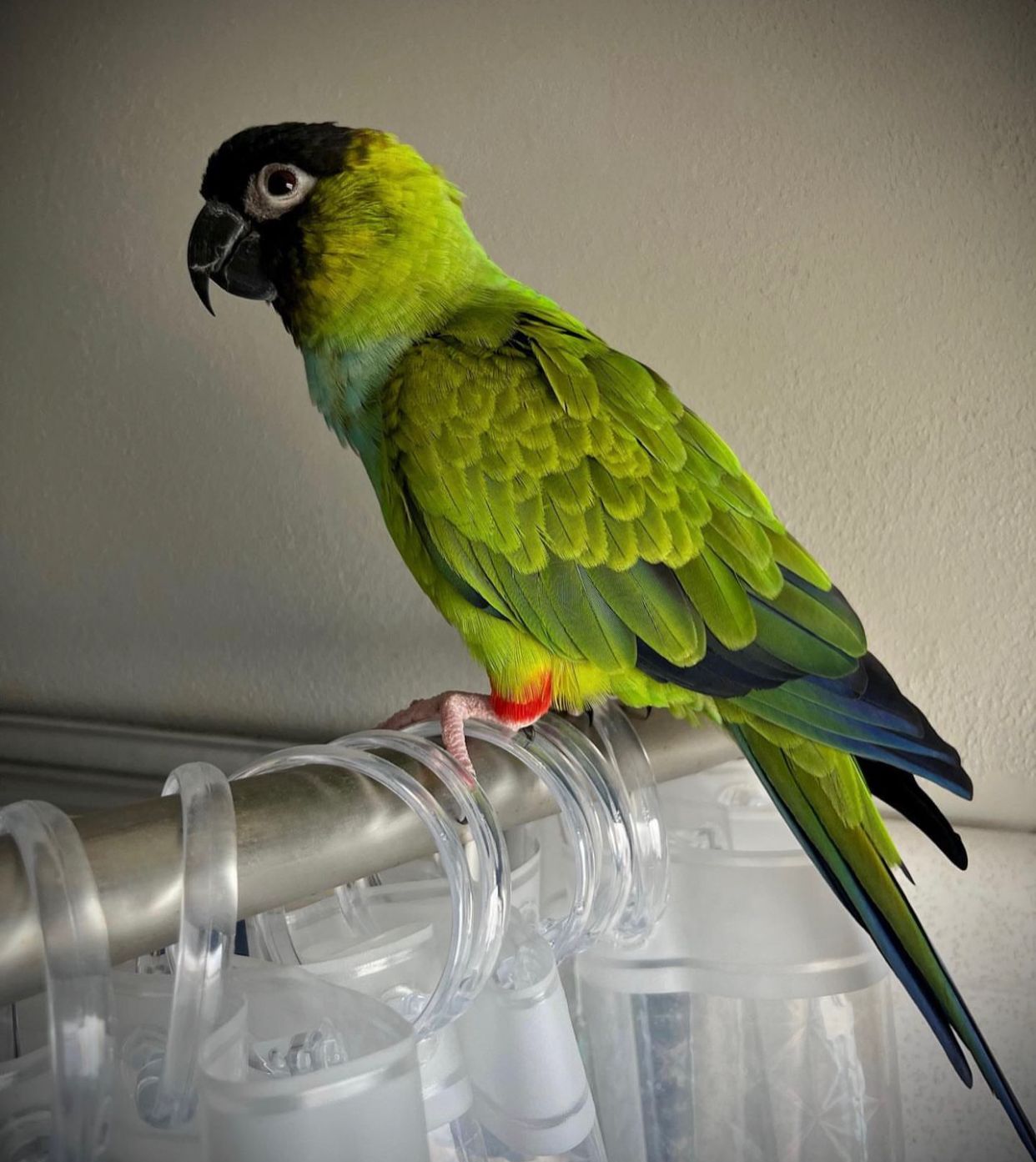


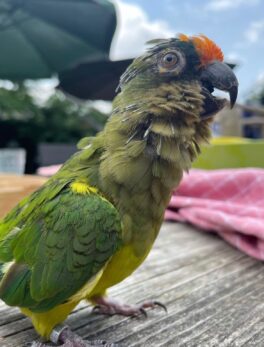
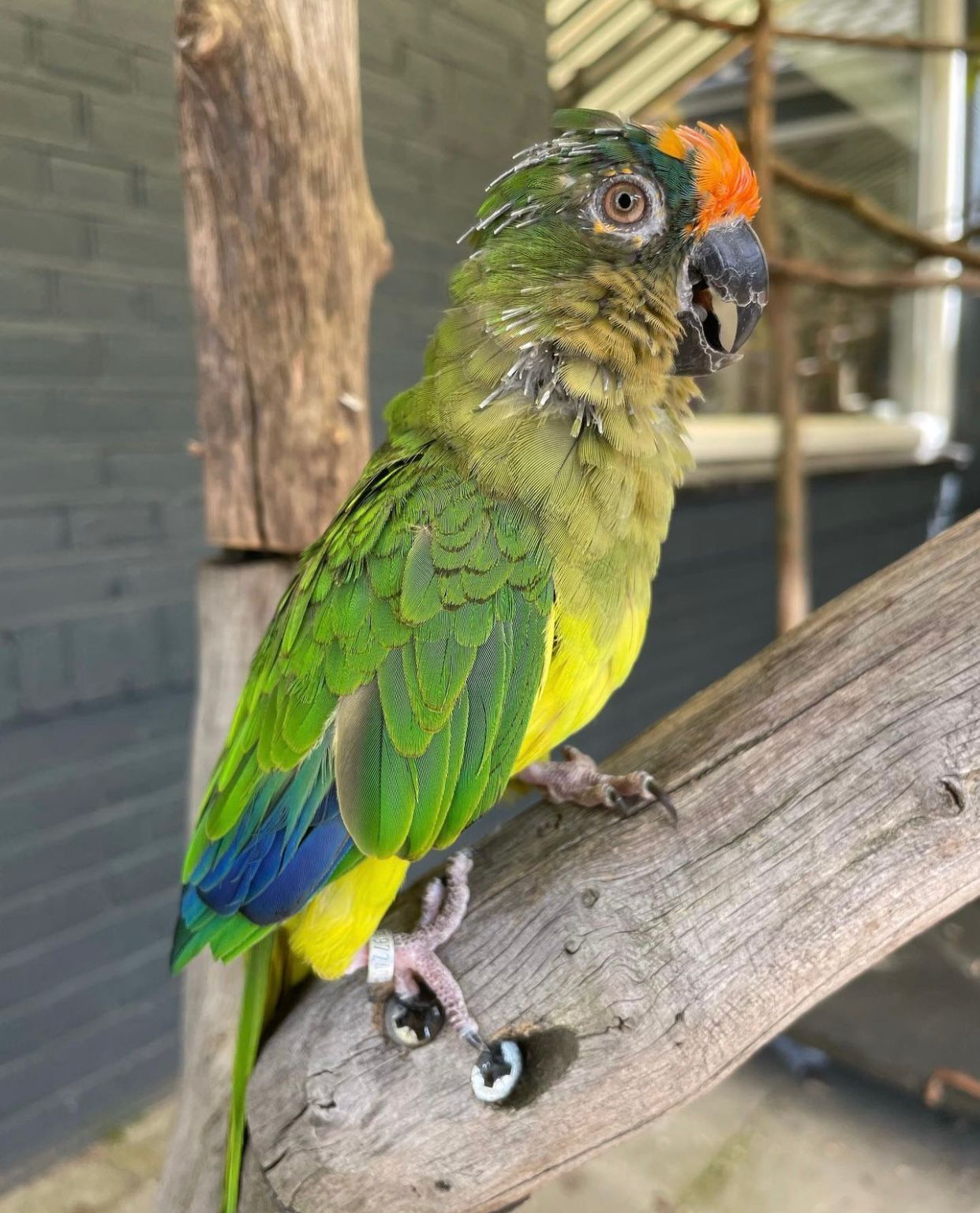
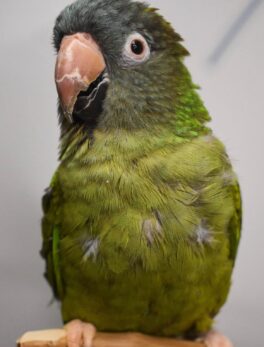

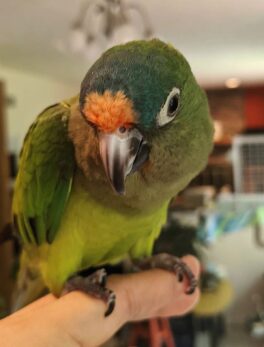

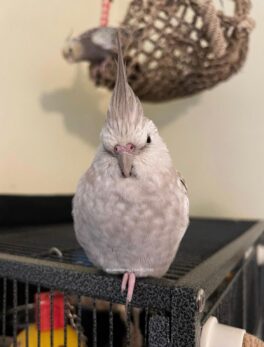

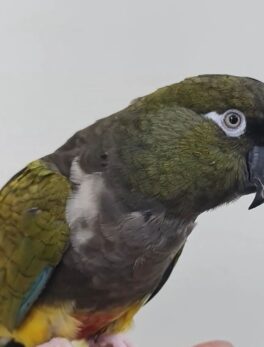



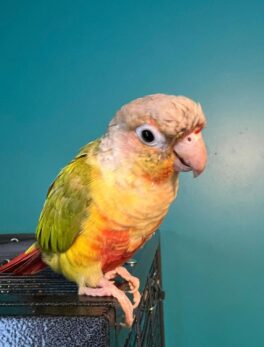
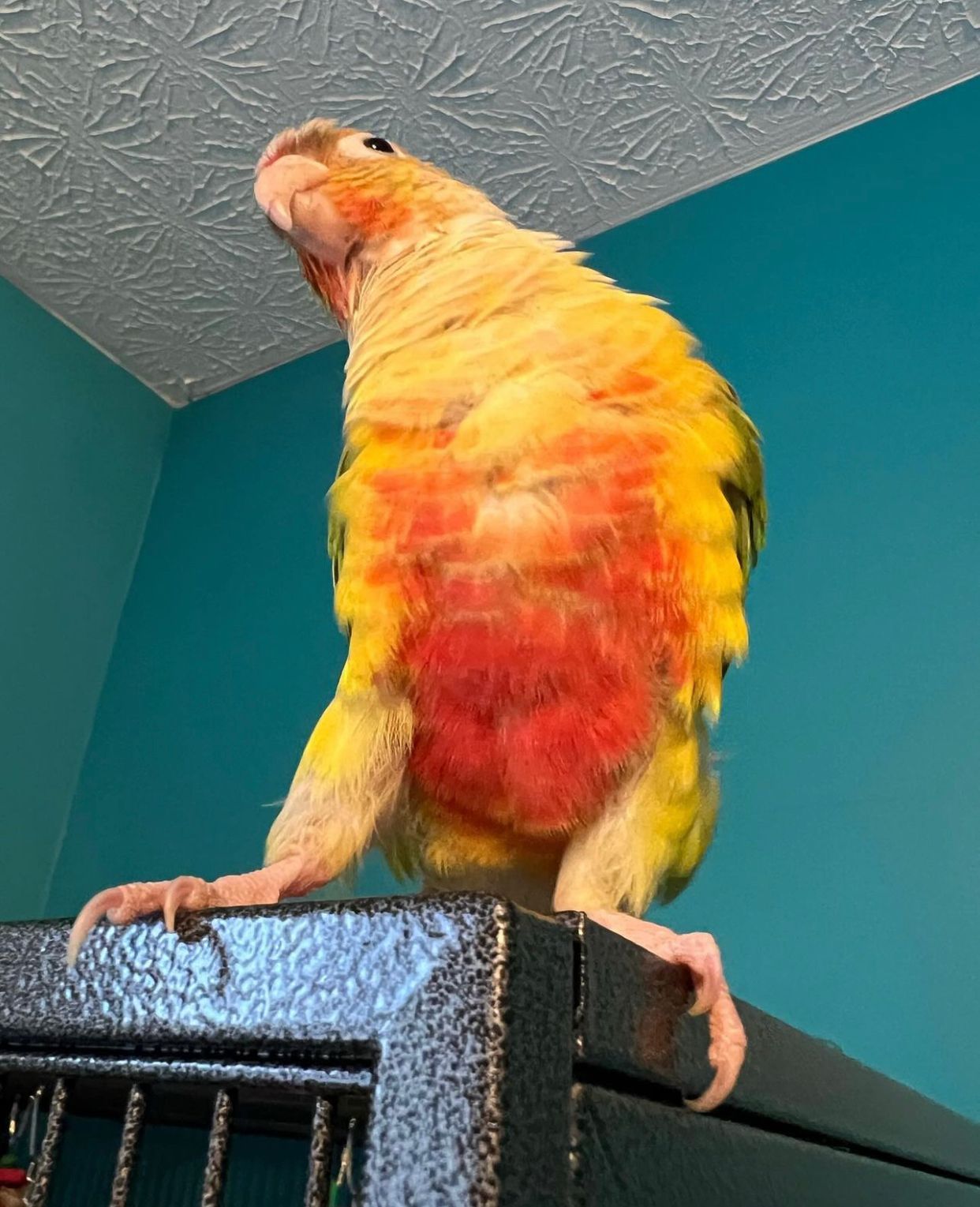
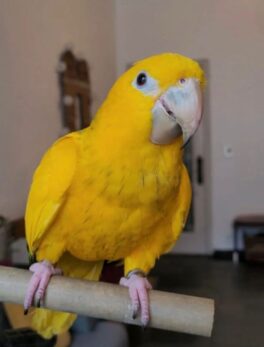
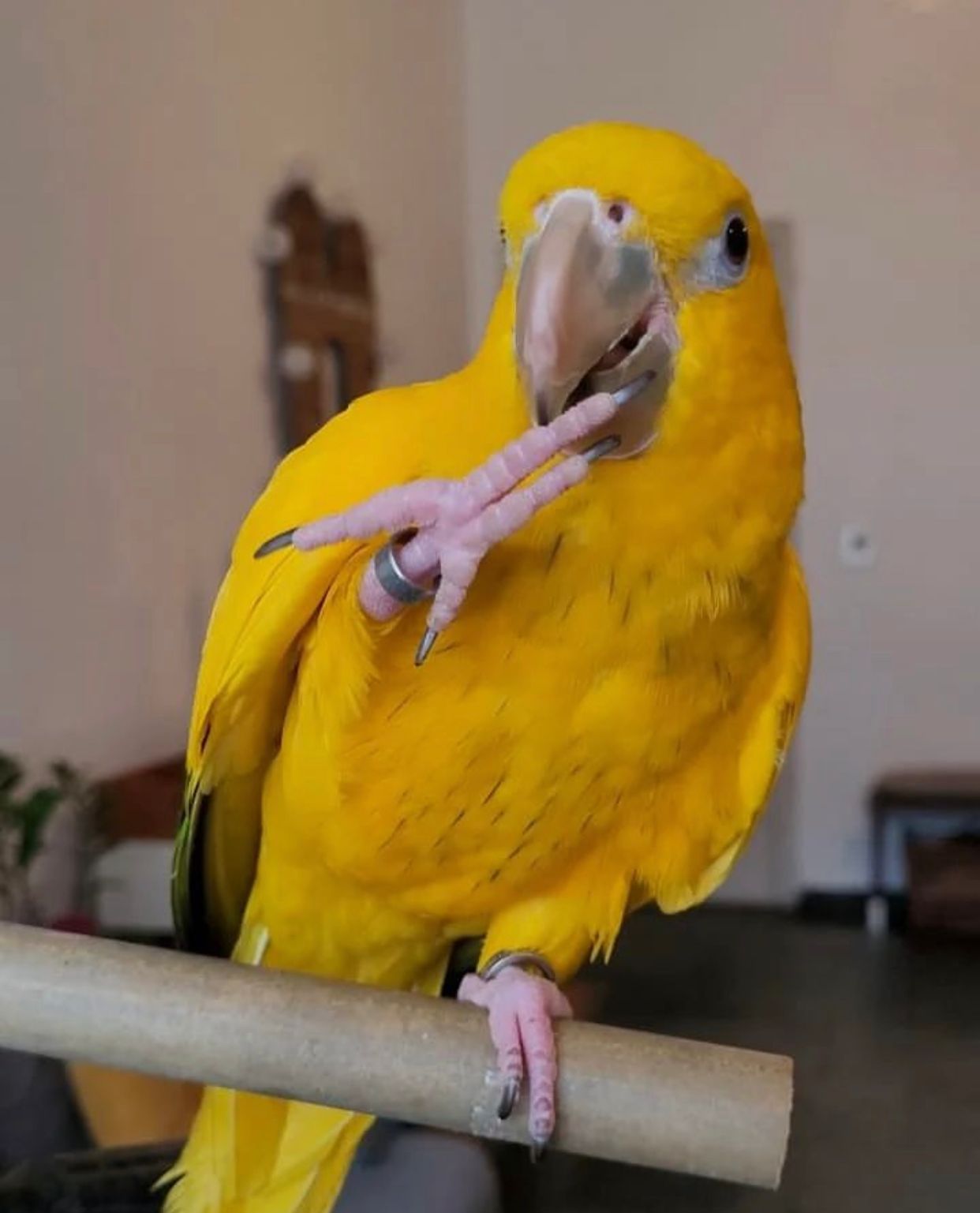


Reviews
There are no reviews yet